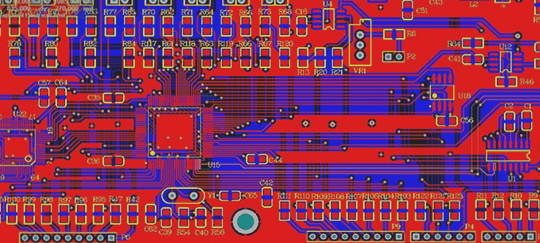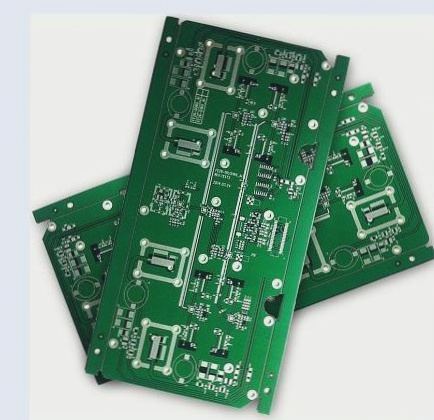DFA in PCB Design: A Comprehensive Guide
Understanding the Three Stages of DFA
DFA, or Design for Assembly, is a crucial procedure in PCB design that involves three key stages:
- Consideration of the entire circuit board design, focusing on component clearance and cost reduction.
- Reviewing files to clear footprints and implement cleaning procedures.
- Identification of factors like wave soldering, reflow soldering, and manual soldering.
Importance of DFA Objectives
Design for Assembly in PCB fabrication aims to achieve several objectives, including:
Standardization
Standardization plays a vital role in reducing confusion during PCB design. Key strategies for achieving standardization include:
- Understanding the source of each component to ensure authenticity and prevent delays.
- Minimizing the number of unique components to simplify assembly and reduce errors.
Validation of Components
Validating components is essential for efficient PCB assembly. Guidelines for DFA in PCB design include:
- Ensuring components in the BOM are available and functional to avoid production delays.
- Matching the manufacturing part number (MPN) to the PCB’s footprint to eliminate mismatches.
- Adhering to component spacing guidelines for proper PCB manufacturing.
Reducing Assembly Errors
DFA focuses on minimizing errors during assembly by following specific guidelines:
- Adhering to size and space limits for drilled holes to optimize PCB functionality.
- Following capacity limits to prevent PCB issues.
- Maintaining clearance rules and board shape for penalization.
- Incorporating thermal outputs where necessary for efficient operation.
The Significance of DFA Standards
Understanding DFA in PCB design is crucial for creating efficient and cost-effective boards. Let’s delve into some essential rules and regulations governing DFA in PCB design.
PCB Component Orientation and Spacing Requirements
Component Orientation Importance
Proper component orientation is crucial for a successful assembly process. It is essential to establish a clear and precise technique before assembling the PCB.
Spacing Requirements
The spacing between components significantly impacts the quality of the printed circuit board. Two key spacing factors to consider are:
- Part Edge Spacing: Maintain a minimum of 125 mil clearance between the board edge and SMD components to prevent pressure issues on solder joints.
- Part-to-Hole Spacing: Ensure a minimum spacing of 8 mils from the hole edge to the pad edge and 7 mils from the hole annular ring to the pad edge for optimal assembly quality.

IPC Assembly Standards
Adhering to IPC assembly standards can enhance your board assembly process. Some key standards include:
- IPC – A – 600: Specifies product acceptance criteria and constant factors.
- IPC – A – 620C: Describes materials standards and acceptance criteria for cable harnessing and other assemblies.
- IPC – A – 630: Defines electronic standards and enclosure specifications for inspection processes.
Common Assembly Defects and Prevention
Identifying and preventing common assembly defects is essential for a flawless PCB assembly. Let’s discuss two prevalent issues:
Tombstones (Manhattan Effect)
Tombstones occur when a component is partially or fully detached from the landing pad, often seen in small SMD passives due to soldering imbalances. Preventive measures include:
- Ensuring high component validity and temperature.
- Avoiding extreme temperature and humidity exposure.
- Extending soaking zone to balance wetting force on pads before reaching the molten state.
Bridging Solder
Bridging solder happens when solder connects conductors that should not be electrically connected, leading to short circuits. To prevent bridging solder:
- Ensure proper soldering techniques and adequate clearance between conductors.
- Use solder masks to prevent unintended connections.
- Inspect solder joints carefully during assembly.
Soldering Tips for PCB Assembly
- It is crucial to ensure that the solder paste contains at least 90% metal content.
- Accurate alignment of the stencil with a reduced size of 10% is essential.
- Properly secure the profile for successful soldering.
Solder Balls: Common Defects in PCB Assembly
Solder balls, small spherical particles of solder, are common defects during surface assembly. These can lead to issues in the functioning of the printed circuit board.
Preventive measures include:
- Ensure pad and space sizes align with the datasheet.
- Bake the printed circuit board before applying solder paste.
- Maintain a plating hole thickness of over 25 micrometers to prevent water trapping.
Solder Voids: Addressing Empty Spaces in Solder Joints
Solder voids, empty spaces or holes in solder joints, occur when there is insufficient solder to establish a connection, often filled with air only.
To avoid solder voids:
- Increase channels for solder escape from the board.
- Consider using lead-free solder paste.
After completing the printed circuit board design, manufacturers must conduct thorough inspections and procedures to ensure quality.
Conclusion: Design for Assembly (DFA) in PCB
The Design for Assembly (DFA) process in PCB design is vital for ensuring the proper functionality of the printed circuit board. Adhering to DFA principles simplifies the manufacturing process and enhances product usability. It is recommended to follow DFA guidelines in PCB design for optimal results.



